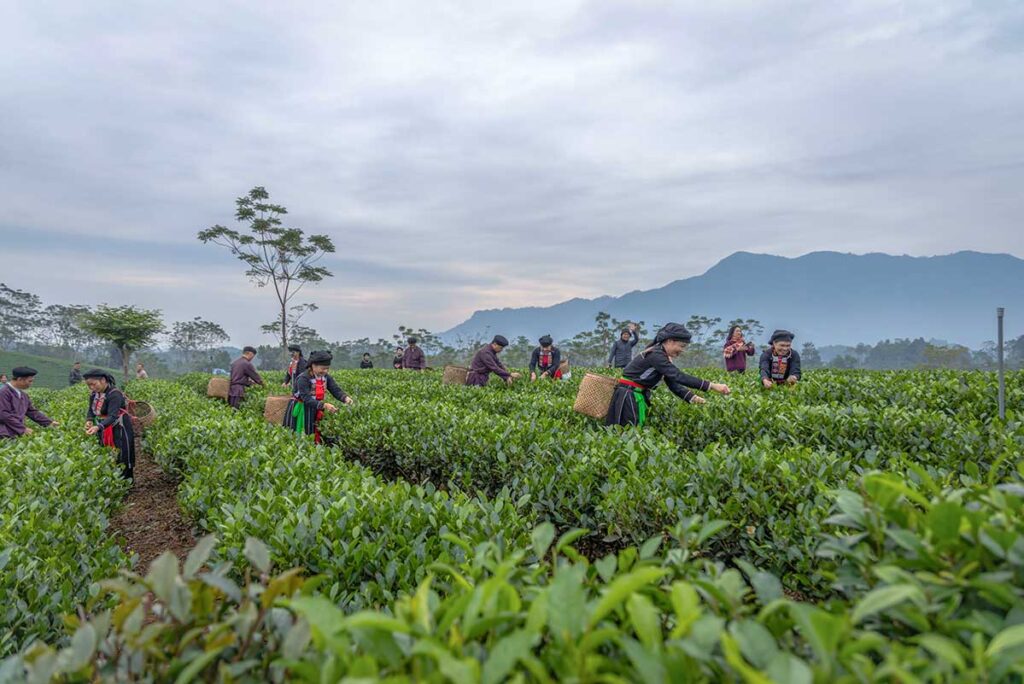What are the Tan Cuong Tea Hills like?
Location and Landscape

Tan Cuong Tea Hills are located in Tan Cuong Commune, just 10 km from Thai Nguyen City and about 2 hours by car from Hanoi. The area consists of gently rolling hills covered in neat rows of tea bushes, with farms spread across the hillsides in small clusters. It’s scenic and peaceful, but not vast—more of a patchwork of family-run plantations than endless green fields.
Climate and Tea auality
The region has a mild, subtropical climate with well-distributed rainfall and rich, slightly acidic soil—ideal conditions for growing high-quality green tea. These natural factors, along with traditional processing methods, give Tan Cuong tea its signature taste: bold, slightly bitter at first, followed by a long, sweet aftertaste. It’s this balance that has made Tan Cuong tea one of the most respected in Vietnam.
History and Cultural importance
Tea cultivation in Tan Cuong began during the French colonial period in the late 19th century and quickly became the region’s most important agricultural activity.
Today, tea is deeply woven into local life—nearly every household is involved in growing, processing, or selling tea. Tan Cuong is often referred to as the birthplace of “Vietnam’s first famous tea,” and the area still holds a special place in the country’s tea heritage.
Signature tea types
Tan Cuong produces several notable varieties, including:
- Bud Tea (chè búp): Made from only the youngest tea buds; strong and aromatic
- Hook Tea (chè móc câu): Shaped like small hooks; commonly used for daily drinking
- Jasmine or lotus-infused teas: Popular for special occasions or gifts
- Young rice tea (chè cốm): A local specialty with a light, nutty aroma unique to the region
Things to do and see at Tan Cuong Tea Hills
1. Enjoy the scenery & Take photos
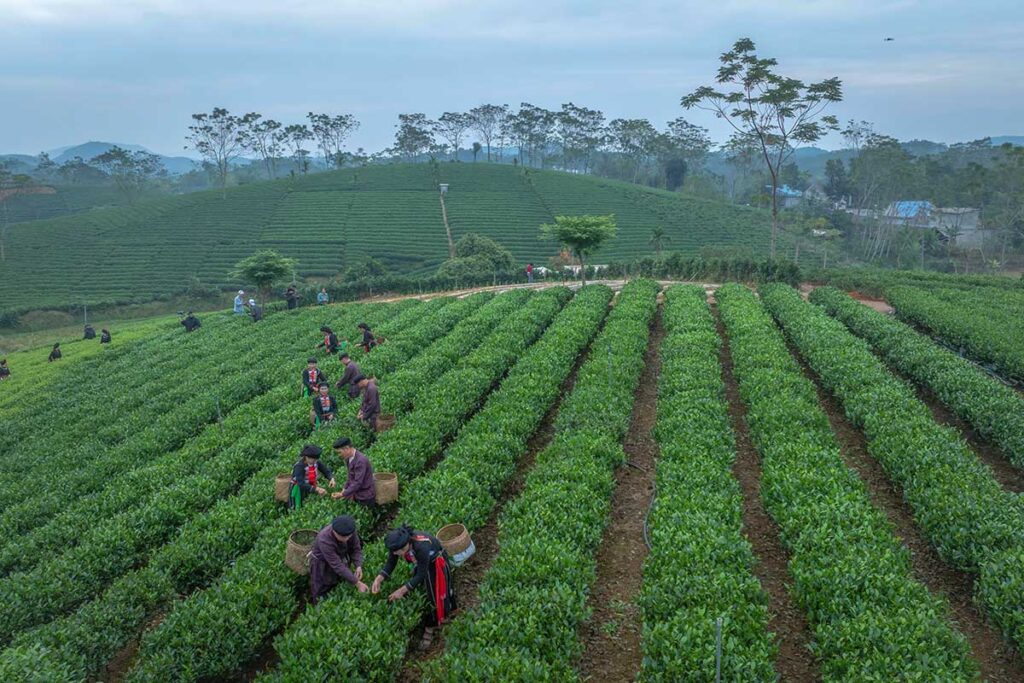
The tea hills are at their most beautiful in the early morning or late afternoon, when the light softens over the landscape. The area features small, bowl-shaped hills blanketed in tidy rows of tea bushes. It’s not as dramatic or expansive as tea regions like Moc Chau or Long Coc, but it offers a peaceful, green setting that’s perfect for a slow stroll or a few quiet photos. If you’re lucky, you might catch locals hand-picking tea leaves—a simple but charming sight that captures the spirit of the region.
2. Try picking tea (Seasonal & Hosted)
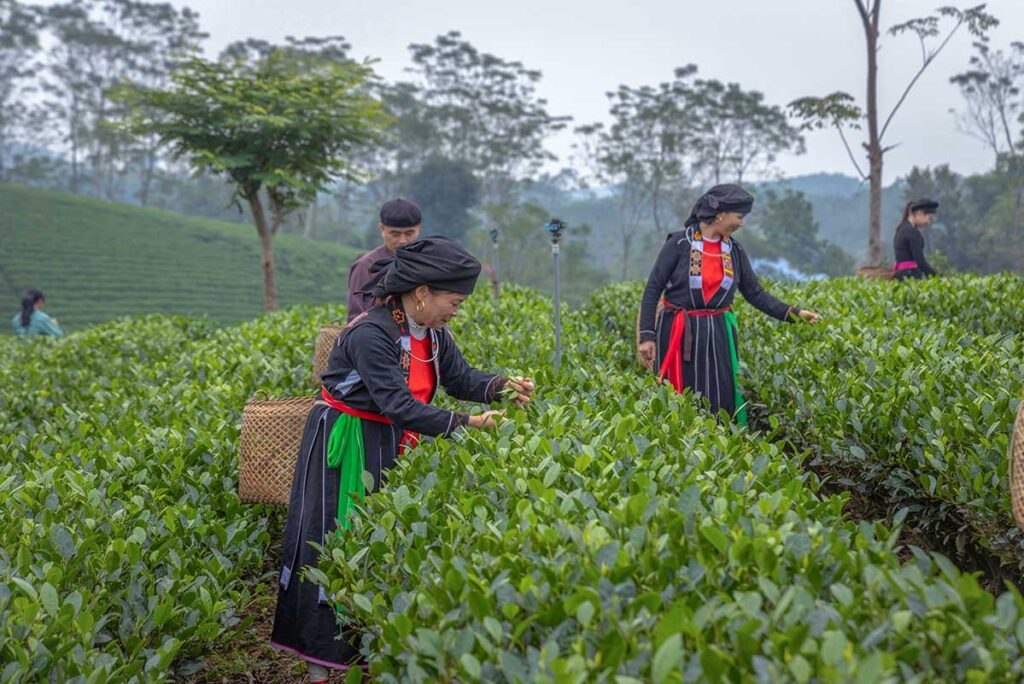
In spring or early summer, some local tea farms open their gates to visitors for a hands-on experience. With the help of local hosts, you’ll learn how to pick the right leaves, understand the importance of timing and technique, and get a glimpse into the rhythm of life in a tea village. These sessions are often part of a guided visit that also includes basic tea processing or a tasting session afterward.
3. Visit a tea farm or workshop
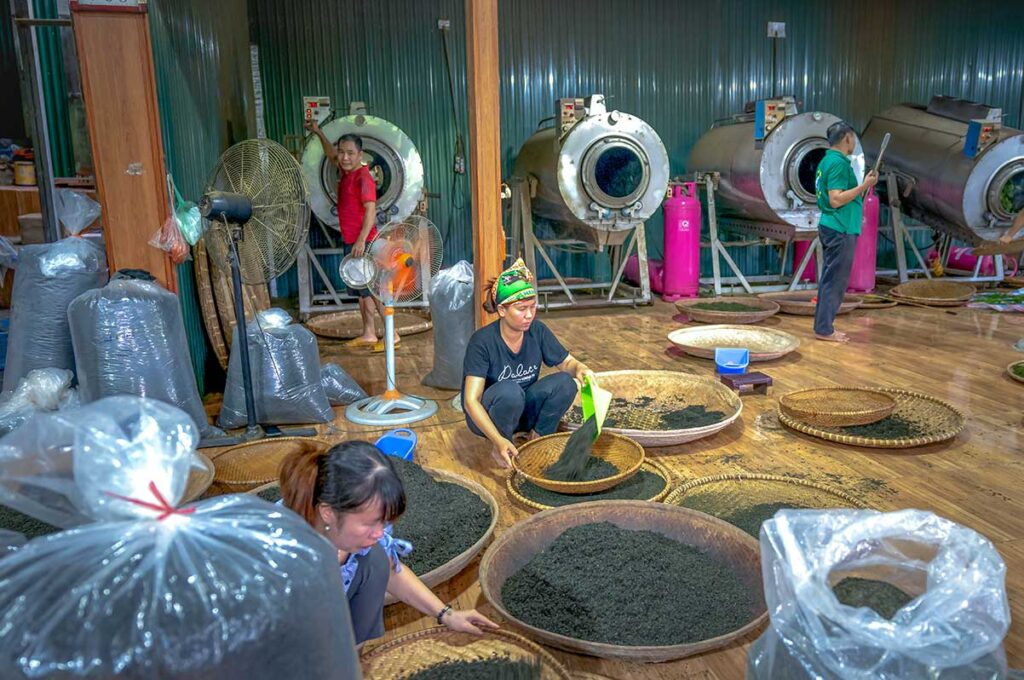
Several small-scale tea producers in the area offer short tours of their operations. You can see how the leaves are dried, roasted, infused, and packaged, often using traditional methods.
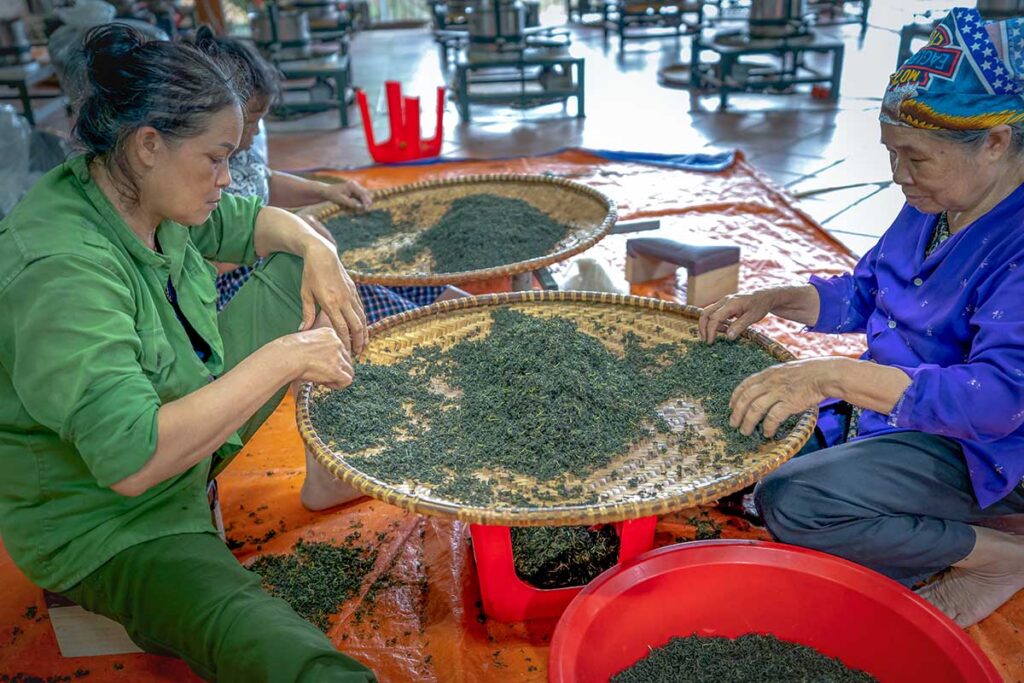
Some places include a simple tasting room or even a homestay for longer visits. While English is limited, many hosts provide visuals or printed materials to help explain the process, and the experience remains authentic and welcoming.
4. Taste tea & Buy as souvenirs
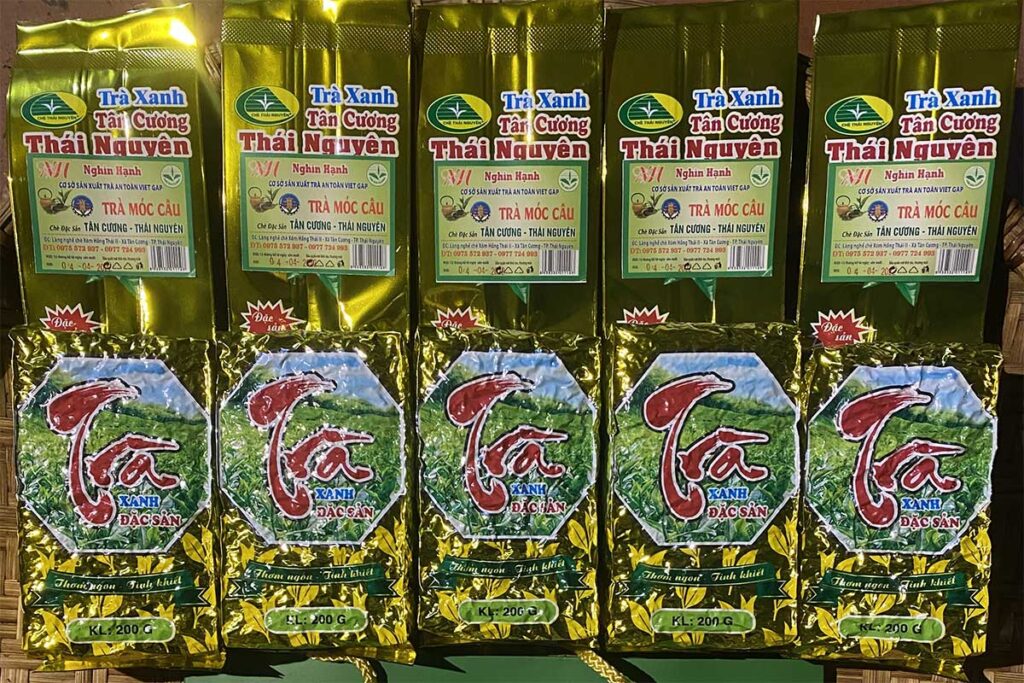
No visit is complete without sitting down for a fresh cup of Tan Cuong green tea. The taste is strong, slightly bitter at first, and followed by a sweet aftertaste—especially noticeable when brewed correctly. This is also the best place to buy tea directly from the source. Prices are often lower than in shops, and the quality is higher. Look out for bud-only teas, lotus- or jasmine-infused teas, or young rice-scented tea, all of which make excellent souvenirs or gifts.
How to get to Tan Cuong Tea Hills
From Hanoi, the tea hills are about a 2-hour drive via the Hanoi–Thai Nguyen Expressway. There’s no direct public transport to the tea-growing area, so the best option is to rent a car with a driver, especially if you want to combine the visit with nearby spots like Nui Coc Lake or continue deeper into northern Vietnam.
From Thai Nguyen City, Tan Cuong is only around 10 km away. A taxi or private car hire is the easiest and fastest way to get there, and it works well as a half-day trip.
By motorbike, the ride is short and manageable if you’re comfortable with local traffic. The roads are mostly paved and in good condition, but traffic near Thai Nguyen can be busy at certain times of day.
Tip: If you’re already exploring Thai Nguyen, you can also include a stop at Nui Coc Lake. Just note that it’s more of a theme-park-style tourist area than a nature experience.
Looking for more ideas? Check out our full guide to Things to do in Thai Nguyen.
Best time to visit
The best time to visit Tan Cuong Tea Hills is during spring (March–May) and early summer (June–July), when the weather is mild, the tea fields are lush green, and you may even catch the locals in the middle of the tea harvest.
Autumn (September–November) is another great option, with clear skies, dry air, and a second tea harvest taking place in some areas. It’s ideal for walking around and taking photos.
Try to avoid the rainy season in late summer, as the paths can get muddy and the scenery loses some of its charm under grey skies. While some local festivals happen in January or early spring, the weather during that time tends to be cold and overcast.
Unlike flower fields that rely on specific blooming periods, tea plantations are green and photogenic most of the year, but the growing and harvesting seasons offer the most vibrant and engaging experiences.
Is Tan Cuong Tea Hills worth visiting?
Yes, if you’re already in Thai Nguyen or passing through on a longer journey into northern Vietnam. The tea hills are one of the most culturally distinctive parts of the province, and tea is a genuine part of everyday life here—not just for show. It’s a nice spot for a half-day trip, especially if you’re interested in agriculture, tea culture, or local crafts.
But no, it’s not worth making a dedicated trip from Hanoi. The plantations are small and scattered, the scenery isn’t dramatic, and there’s little infrastructure for foreign travelers.
If you’re looking for more immersive or scenic tea landscapes, you’re better off visiting:
- Moc Chau Tea Hills – more expansive, scenic, and tourist-friendly
- Long Coc Tea Hills – closer to Hanoi, known for misty mornings and panoramic sunrise views
